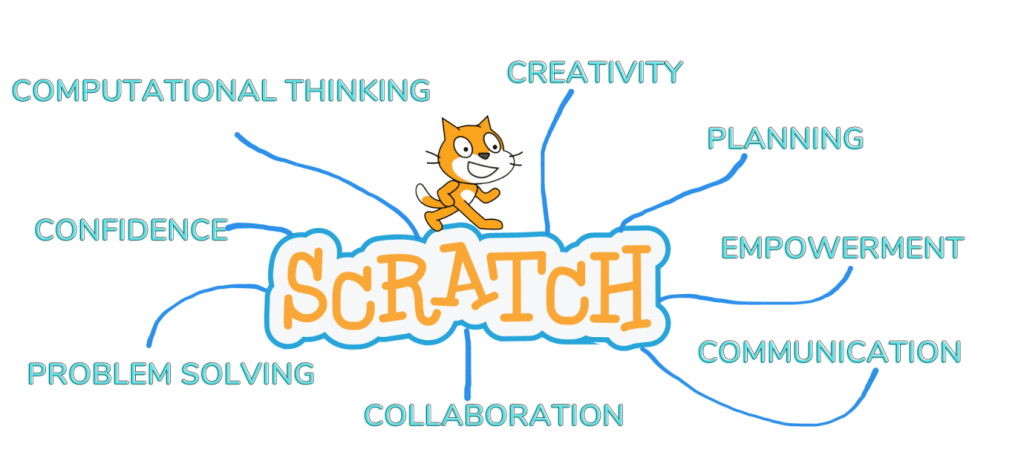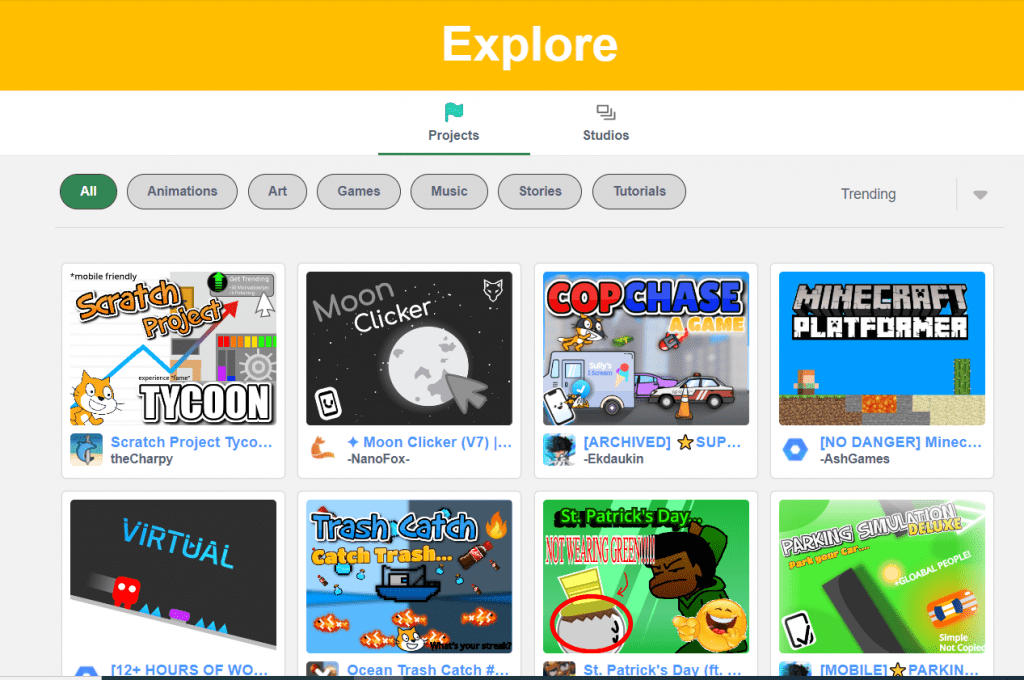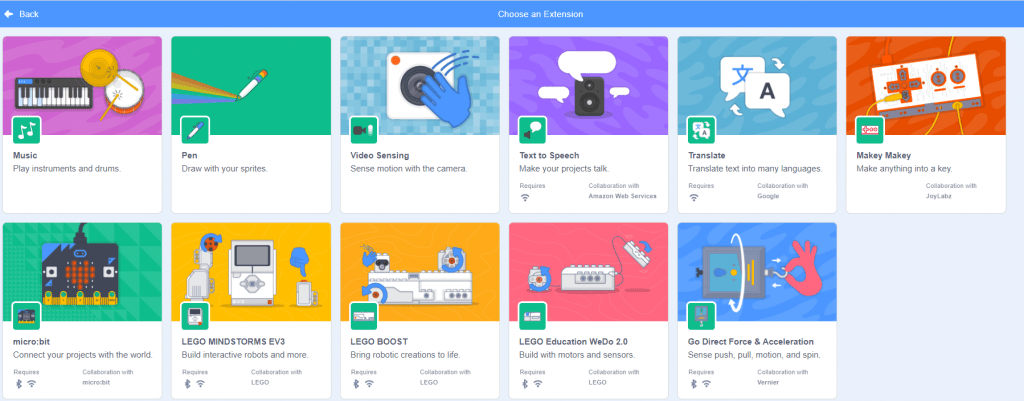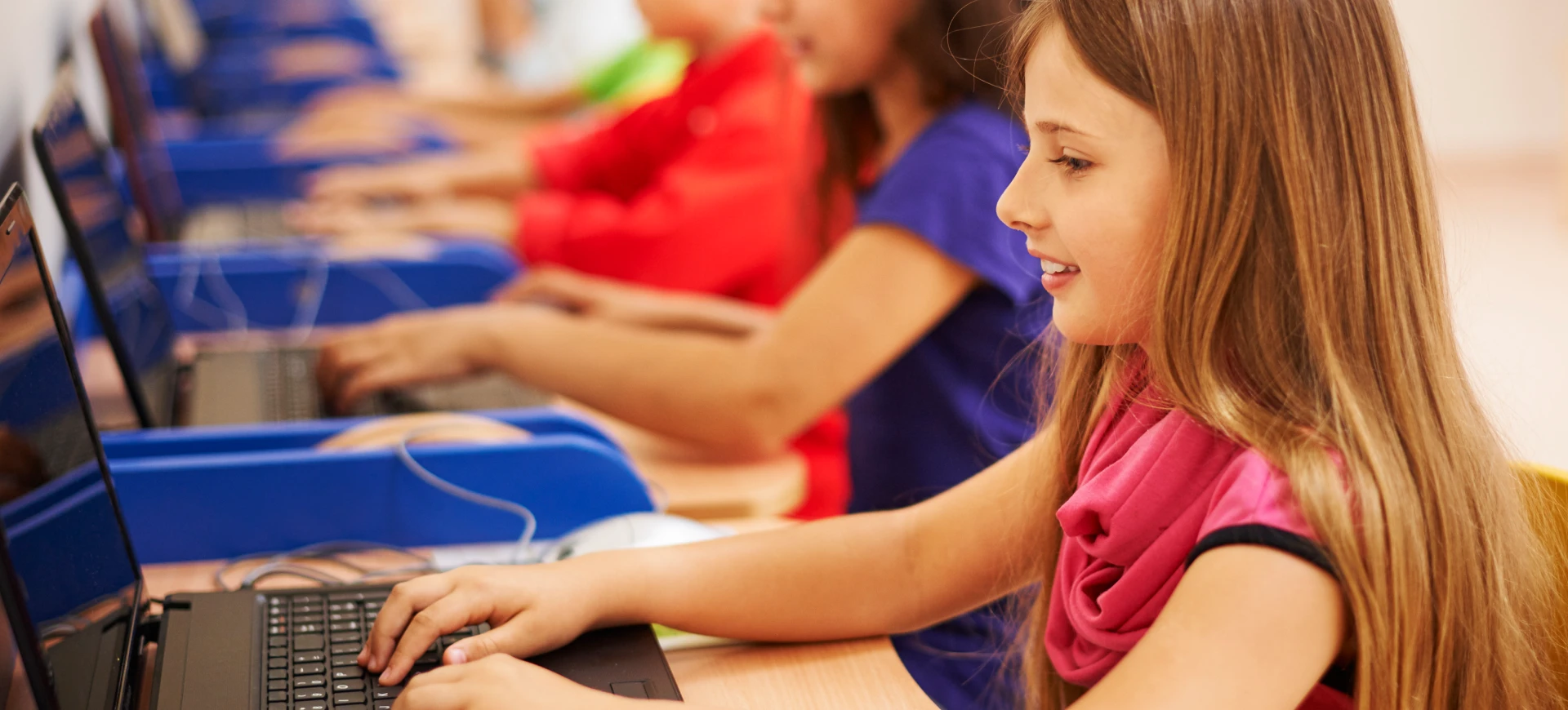Scratch programming is a fantastic tool for teaching coding to middle schoolers. It’s an intuitive way for students to learn programming concepts while also being creative and having fun. Scratch is a block-based programming language that makes it easy for anyone, regardless of their coding experience, to create interactive projects.
In this blog, we’ll explore how to make scratch programming engaging and fun for middle schoolers. We’ll cover the benefits of teaching Scratch, how to incorporate game design elements, how to encourage creativity, best practices for teaching Scratch programming in the classroom, and resources for learning and teaching Scratch programming.
How to Keep Middle Schoolers Interested in Coding ?
Coding is an essential skill for kids in today’s digital world. It teaches them problem-solving skills, logical thinking, creativity, and innovation, as well as provides them with opportunities to explore and understand technology. Overall, coding for kids is valuable for developing 21st-century important skills and preparing for future career opportunities.
There are several ways to keep middle schoolers interested in coding:
- Make it interactive: Use tools and platforms that allow students to see the immediate results of their code. For example, visual programming languages like Scratch and Blockly allow students to create animations and games using drag-and-drop blocks.
- Gamify learning: Use game-based learning to teach coding concepts. Platforms like CodeCombat and CodinGame use gaming elements to teach programming concepts.
- Connect coding to their interests: Find out what your students are interested in and use those interests to teach coding concepts. For example, if your students are interested in music, teach them how to code music software.
- Encourage collaboration: Encourage students to work in pairs or small groups to complete coding projects. Collaboration not only makes the learning process more enjoyable, but it also helps students learn from each other.
- Showcase their work: Create opportunities for students to showcase their coding projects. This could be a class presentation or a school-wide event. Seeing their work recognized and appreciated can be a great motivator for students to continue coding.
- Provide real-world examples: Give students examples of how coding is used in real-world situations. For example, show them how coding is used in creating websites, mobile apps, and video games.
- Provide challenges: Provide coding challenges that are fun and engaging. This could be a coding competition or a coding scavenger hunt.
Overall, making coding fun, interactive, and relevant to student’s interests is key to keeping them interested in coding.
Why Scratch Programming is great for Middle Schoolers ?
Middle schoolers are at the perfect age to learn programming concepts. They’re curious, creative, and eager to learn new things. However, traditional coding languages like Python or JavaScript can be challenging for beginners. That’s where Scratch programming comes in with block coding.

There are several reasons why Scratch programming is a great tool for teaching middle schoolers about coding and developing computational thinking skills. Few are listed here:
Reason 1: An excellent approach to introducing coding to kids.
Scratch provides a safe and fun-filled learning environment that encourages children to think creatively, reason systematically, and collaborate with others, skills that are vital for success in today’s society. It is different from other programming languages as it allows kids to create their own stories and games by using pre-existing programs, which makes it less daunting for them to learn to code. This motivates them to experiment with various concepts such as algorithms and looping, while also creating programs that are visually appealing and functional. Although Scratch is not a complete coding tool, it assists children in feeling comfortable with programming and takes a big step towards developing innovative thinking.
Reason 2: A beginner-friendly tool that anyone can learn to use, regardless of their coding experience.
This innovative product is aimed at children who may feel intimidated by technology, as it has been created to be both easy and enjoyable to use. Regardless of their level of understanding, kids can begin creating exciting projects with the tools provided.

In addition, there are beginner’s tutorials that children can follow to quickly learn more about the product and improve their usage skills. Moreover, this powerful tool provides children with the opportunity to express their creativity and explore various possibilities.
Reason 3: Introducing Kids to the World of Computer Science
Teaching computer science to children is a highly beneficial opportunity for their mental development. By introducing them to coding, robotics, and AI, they get to experience engineering and information technology first-hand, which helps them develop required skills from an early age. Understanding these fundamentals can also pave the way for further studies in this field in the future. Computer science is a vast and exciting area with unlimited potential for exploration and discovery, and it can be a great way to bond with your children while exploring what they can achieve.

Reason 4: Unleashing Creativity with Scratch Programming: Games, Animations, and Stories Creation
Scratch programming language offers unlimited possibilities, allowing users to learn the basics of both coding and design, with access to a vast library of battle-tested modules and solutions. Its intuitive interface enables even beginners to create something dynamic in minutes.

Additionally, the Scratch community provides extra support through tutorials, guides, Q&A forums, and more. Scratch has been used globally to create amazing projects like interactive stories that teach about different cultures, 2D platformer games that promote sustainable living, and music videos that capture daily life experiences. Scratch empowers kids to showcase their creativity and innovation.
Reason 5: Empowering Kids to Collaborate Their Creative Work with the World
As technology continues to evolve, children are presented with numerous opportunities to explore their creative potential. Sharing their creations online is one way for kids to showcase their ideas and talents on a public platform. From drawing to photography, writing to crafting, various apps and websites offer a space for artistic expression and community building. In today’s competitive creative sector, establishing an online presence early on can jumpstart children’s careers while highlighting the value of their work.

Reason+ 6: From Drag-And-Drop To Problem-solving, Scratch Programming Builds Skills
Scratch programming offers an engaging approach to learning coding and computer science. It encourages creativity and critical thinking, as kids develop visually appealing and functional projects such as stories, games, and animations. As they work on their projects, they also learn important communication skills, sharing their ideas and collaborating with others.
Moreover, Scratch provides a practical way to develop troubleshooting skills in case there is any issues they encounter while coding. It is an open-ended environment where there is no right answer, enabling kids to become more confident.
Using Scratch can also help improve coordination and motor skills as children navigate through menus and customize project settings. As they become more familiar with the interface, they gain better control and learn how different actions result in specific outcomes.
Reason 7: Explore the World of Coding with Free and Accessible Scratch Programming
Scratch programming has become a popular tool for teaching basic coding skills to children around the world. It provides an accessible and engaging way for kids to learn programming concepts and develop creative thinking skills. Scratch is free and can be accessed by anyone with an internet connection, making it an excellent option for those who want to learn to code but don’t have access to expensive software or coding camps.
It is user-friendly, visual, and interactive, and encourages creativity, making it an excellent choice for educators looking to engage and motivate their students.
Reason 8: Expanding Scratch’s Capabilities with Extensions for Hardware and Online Communication
Scratch Extensions refer to a set of additional blocks that can be integrated into the Scratch editor’s block palette, enabling children to expand the platform’s capabilities. Scratch 3.0 offers this new feature that enables Scratch programs to communicate with external hardware and online resources.

By integrating new extensions into their Scratch projects, kids can enhance their game design capabilities and incorporate gaming-related features. Moreover, as new extensions become available, they can be added to existing Scratch projects to further enhance their functionality.
What sets SkoolOfCode apart from other Online Coding schools?
SkoolOfCode is an innovative online coding school that provides a range of age-appropriate courses designed to make learning coding a fun and interactive experience. With a unique concept-building approach, children learn coding in a way that is both enjoyable and effective.
SkoolOfCode provides scratch programming courses tailored for elementary to middle school students. Each module is carefully crafted with age-appropriate complexity, enabling children to develop their programming concepts through a series of engaging activities, games, projects, and assessments.
Resources for learning and teaching Scratch programming
Here are some resources for learning and teaching Scratch programming:
- Scratch website: The official Scratch website (scratch.mit.edu) provides a wealth of resources for learning and teaching Scratch programming, including tutorials, projects, and a community forum.
- ScratchEd: ScratchEd is a community of educators who teach with Scratch. Their website (scratched.gse.harvard.edu) provides resources for teaching Scratch in a variety of contexts, including K-12 classrooms, after-school programs, and museums.
- ScratchJr: ScratchJr is a version of Scratch designed for young children (ages 5-7). It is available as a free app for tablets and smartphones and provides a simplified version of the Scratch programming language.
- CS First: CS First is a free program from Google that teaches Scratch programming to middle school students. It provides lesson plans, videos, and other resources for educators to use in their classrooms.
- Scratch programming books: There are many books available that teach Scratch programming, including “Scratch Programming Playground” by Al Sweigart and “Scratch 3.0 Programming for Kids” by Raj, Packt.
- YouTube tutorials: There are many YouTube tutorials available that teach Scratch programming. Some popular channels include Scratch Programming (by Kids Programming) and Scratch Tutorials (by Scratch School).
Consider trying out these tips to inspire their imagination:
- Explore the “Things to Try“ section on the Scratch website, where your child can learn how to design a game, craft a story, compose music, and much more.
- Encourage your child to use the search bar on the Scratch website to find projects related to their hobbies, favorite sports, cartoon characters, or other interests. These projects can serve as a source of inspiration, and your child can even follow the creators of those projects for more ideas and inspiration.
- Check out the Scratch Design Studio section on the Scratch homepage, where you can find new project ideas that are open to the entire Scratch community, including beginners.
- For more information about Scratch and its capabilities, head over to the “About Scratch” section of the website.
By using these resources, students and educators can learn and teach Scratch programming in a fun, engaging, and effective way.
Conclusion
Scratch programming is a fun and engaging way to teach coding to middle schoolers. It provides a foundation for more complex programming concepts while also building 21st century skills. By incorporating game design elements and encouraging creativity, you can keep middle schoolers engaged in Scratch programming. And with resources like ScratchEd and Scratch.mit.edu, learning and teaching Scratch programming has never been easier.
Through Scratch, kids can create a variety of projects, including interactive stores, games, and animations, which they can share with others online. By working on projects and collaborating with other users, kids can develop communication skills and learn from each other’s ideas. Scratch also offers a supportive community of users, with resources such as tutorials and forums available to help users learn and troubleshoot any coding challenges they may encounter.
Overall, Scratch programming is a fantastic resource for kids looking to learn coding skills and explore the world of computer science. So if you’re looking for a fun and effective way to teach coding to middle schoolers, don’t wait any longer to start your child’s coding journey. Book a trial class at SkoolOfCode today.
Ms.Manpreet Virk, an educator at SkoolOfCode with a degree in M.Phil and Master in Computer Science. She is passionate about learning and teaching young minds.


